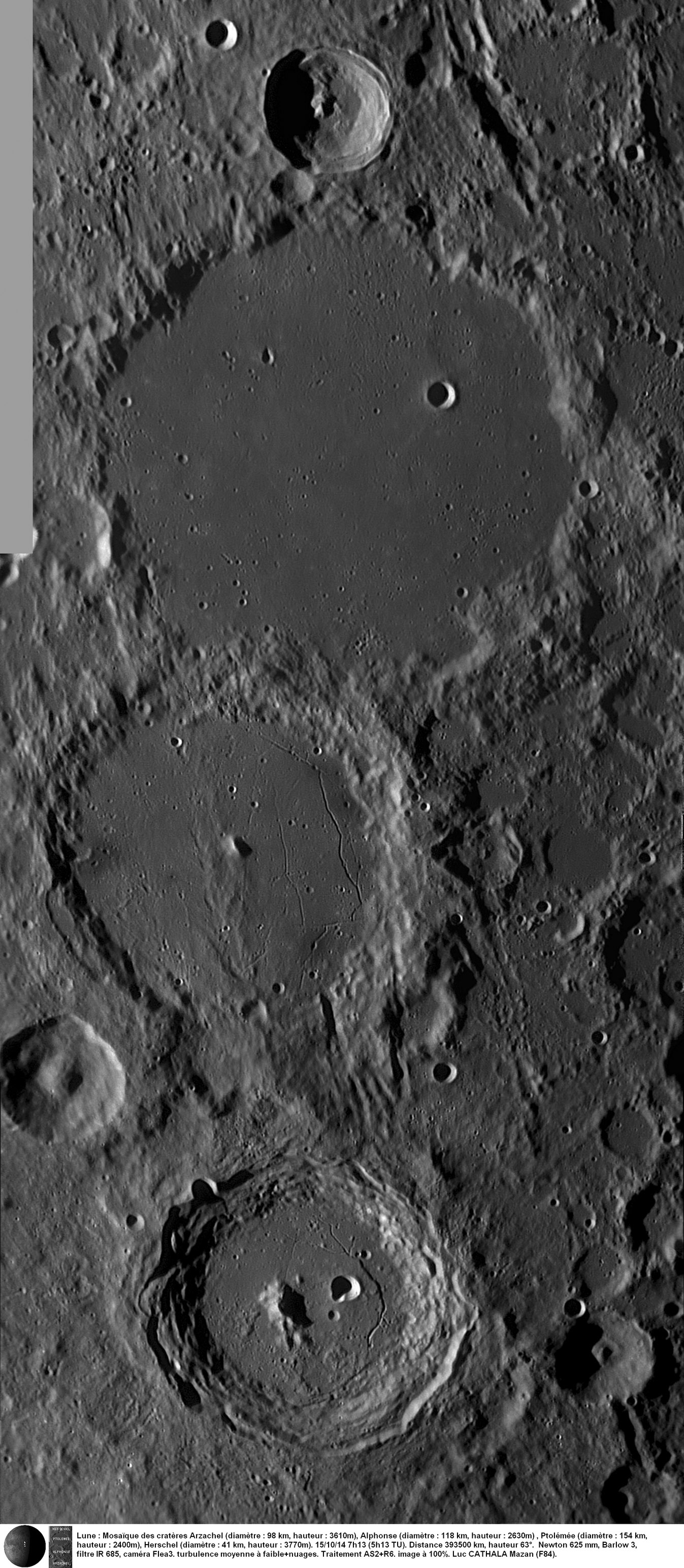November 21, 2014
The Quadruplet

image by Luc CATHALA, Vaucluse FRANCE
Over LPOD's history the quality of amateur imaging has progressed to the stage where it is often necessary to look twice, to check if an image is from a lunar orbiter or just from someone in their backyard. I sometimes wonder if it would have been possible for technology to have developed to produce digital video cameras and computers with amazing image processing software, but not to have created rockets to fly to the Moon. If that had happened we wouldn't know the ages and compositions of lunar materials - samples told us that - but perhaps the half-kilometer resolution of excellent images such as Luc's, and the colored images of Max and others, could have revealed much of our modern understanding about lunar surface processes. By 1949, from images, Ralph Baldwin had already correctly deduced that craters formed by cosmic impacts, and he recognized that the circular maria filled very large craters - what we now call impact basins. He also proposed that the maria were lava flows, although the evidence for that was not as compelling. Later, Gene Shoemaker, Don Wilhelms and other US Geological Survey geologists created the stratigraphic framework for lunar history that we still use. They did this by mapping on Kuiper's Photographic Lunar Atlas and by visual observing with the Lowell Observatory 24". The PLA/ was surpassed by amateur imaging nearly a decade ago, and I assume the eye, brain, hand coordination needed to produce good telescopic sketches has also been surpassed. Without orbiters we still would not have high quality topographic maps, although Jim Mosher's LTVT software might have been modified to compile 3-dimensional maps, rather than just spot heights. Our general understanding about the Moon came from images, with the samples providing the specifics of time and composition.
Chuck Wood
Related Links
21st Century Atlas// charts 16 & 17.
Luc's website
Yesterday's LPOD: Rillorama
Tomorrow's LPOD: What Did Galileo See?
COMMENTS?
Register, Log in, and join in the comments.



